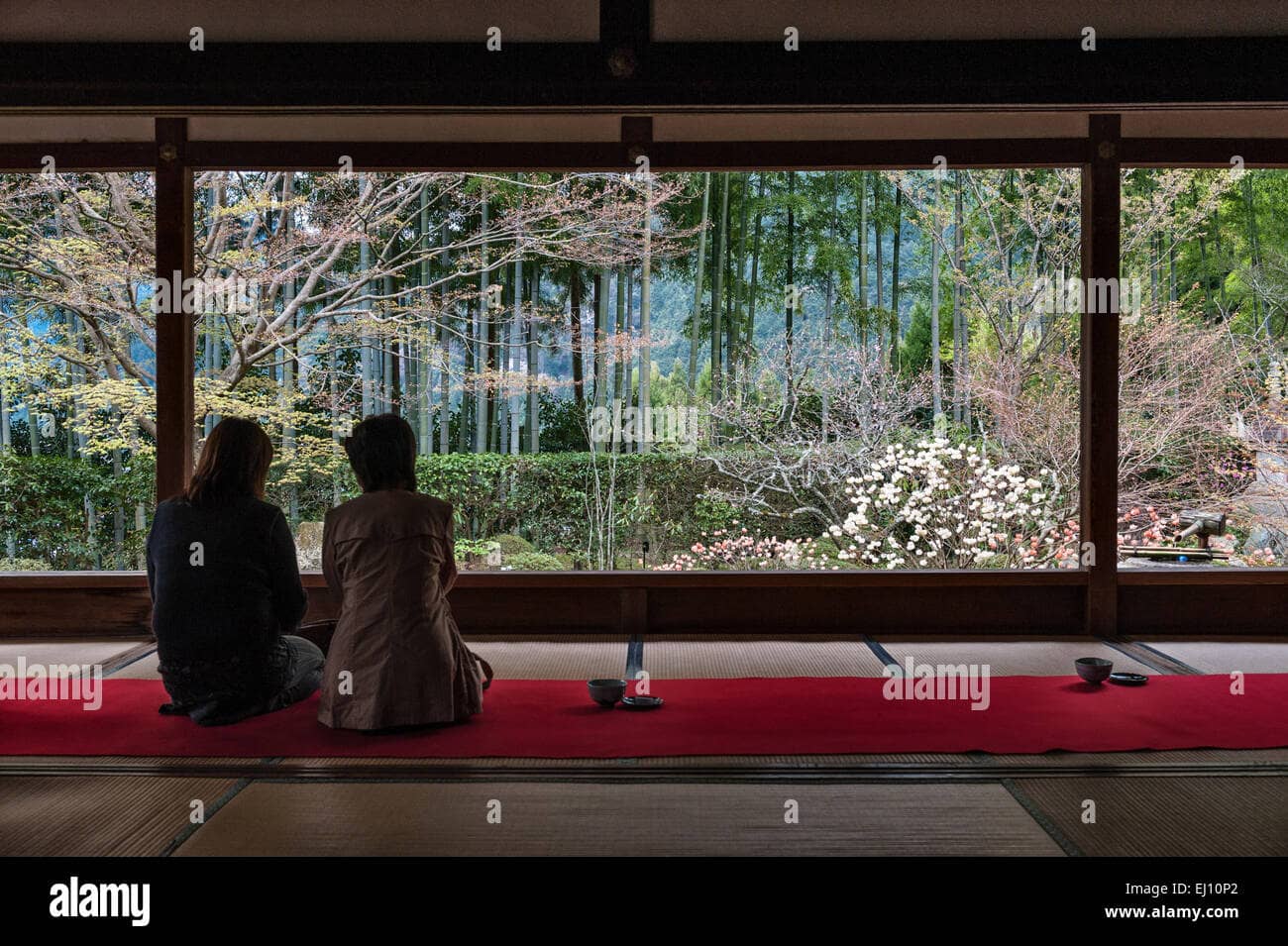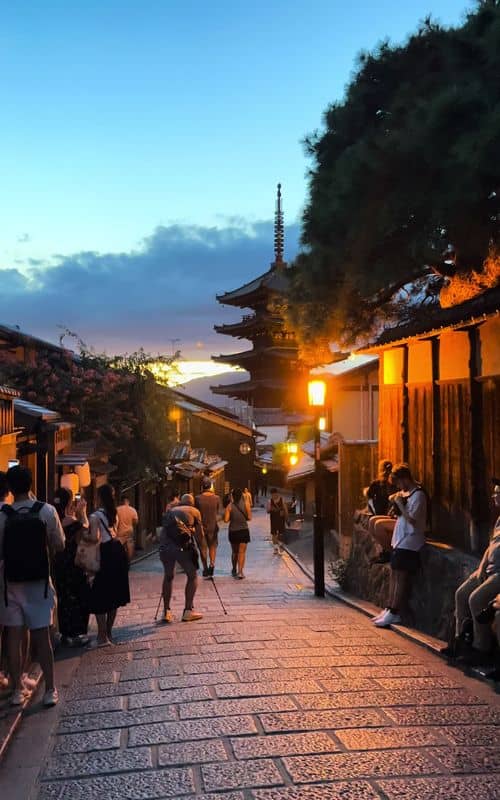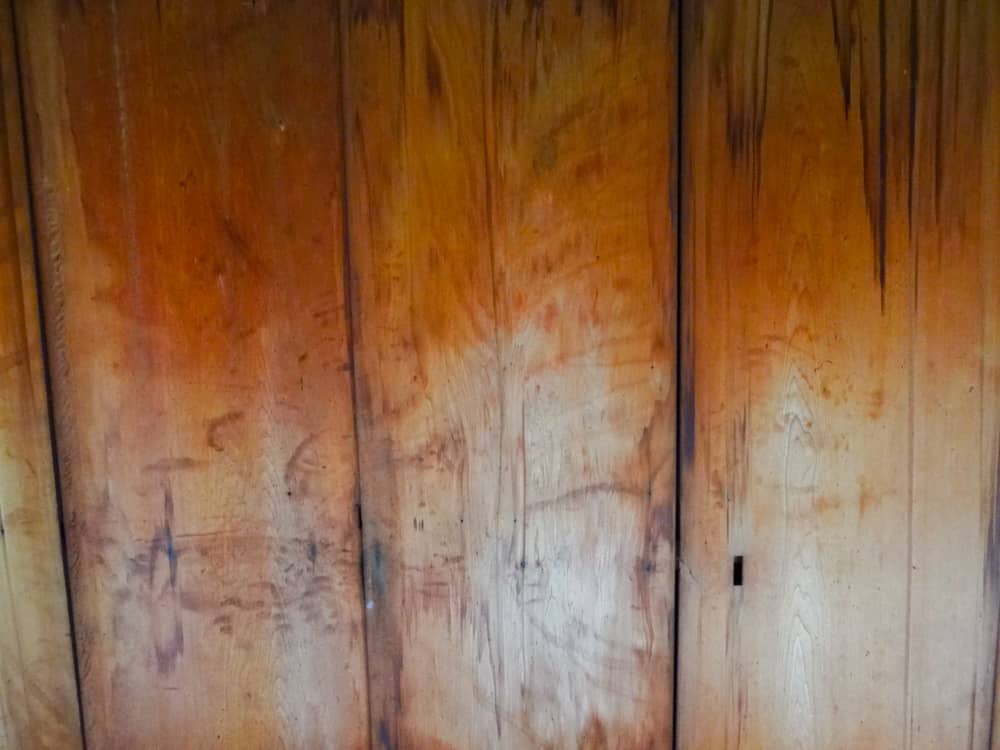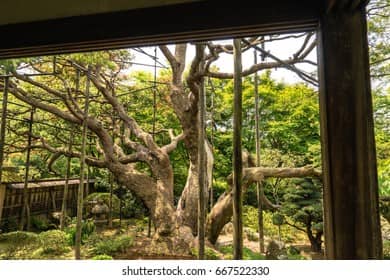Hosen-in Temple Ohara Kyoto
A tranquil Buddhist temple in Kyoto's Ohara village, famed for its 'picture frame' garden and a unique blood-stained ceiling.

Highlights
Must-see attractions

Social
From TikTok & Reddit
Best Time
Experience quiet serenity
Hosen-in Temple Ohara Kyoto
Best Time
Experience quiet serenity

Highlights
Must-see attractions
A tranquil Buddhist temple in Kyoto's Ohara village, famed for its 'picture frame' garden and a unique blood-stained ceiling.
"Enjoy a peaceful escape with matcha overlooking a stunning garden, a true gem in Ohara."
🎯 Arrive at Opening
Beat the crowds and enjoy the peaceful atmosphere with a tea ceremony.
🍵 Enjoy the Matcha
The admission fee includes a delicious bowl of matcha and a sweet.
Highlights
Discover the most iconic attractions and experiences

The 'Picture Frame' Garden
Main Hall
A meticulously framed view of a serene garden, offering a unique perspective and a moment of quiet contemplation.

Blood-Stained Ceiling
Main Hall
A historically significant ceiling, stained with the blood of samurai, offering a poignant and unique glimpse into the past.
Matcha Tea Experience
Tatami Room
Enjoy traditional matcha tea and a sweet treat while overlooking the tranquil garden.

Ancient Pine Tree
Main Garden
Admire a magnificent 700-year-old pine tree, shaped like Mt. Fuji, a testament to nature's artistry.
Plans like a pro.
Thinks like you
Planning Your Visit
Escape the Kyoto Crowds
Embrace the Garden Views
Best Times
Insider Tips
from TikTok, Instagram & Reddit
🎯 Arrive at Opening
Beat the crowds and enjoy the peaceful atmosphere with a tea ceremony.
🍵 Enjoy the Matcha
The admission fee includes a delicious bowl of matcha and a sweet.
🌳 Don't Miss the Other Garden
Beyond the main view, explore the smaller, often overlooked garden.
🚌 Getting There
Ohara is a bit of a journey, but worth it for the tranquility.
Tips
from all over the internet
🎯 Arrive at Opening
Beat the crowds and enjoy the peaceful atmosphere with a tea ceremony.
🍵 Enjoy the Matcha
The admission fee includes a delicious bowl of matcha and a sweet.
🌳 Don't Miss the Other Garden
Beyond the main view, explore the smaller, often overlooked garden.
🚌 Getting There
Ohara is a bit of a journey, but worth it for the tranquility.
💰 Entry Fee
Expect around ¥800-¥900, which includes tea and a cookie.
What Travellers Say
Reviews Summary
Visitors consistently praise Hosen-in Temple for its serene atmosphere, beautiful 'picture frame' garden, and the unique experience of enjoying matcha tea while overlooking the scenery. The historical significance of the blood-stained ceiling is also a notable point of interest. While some find the admission fee a bit high, most agree it's a worthwhile escape from Kyoto's crowds.
"Quite easy to reach. However it was hot day, +32 C. View to the Garden was impeccable. Relaxing to just sit and sip Green Tea on Tatami. Restrooms there. See the bloody stains. Staff will help to tell story. ¥800/person, with Tea and Cookie"
Ismo Anttila
"Beautiful temple, i believe the admission was ¥900 but that comes with a tea service. I thoroughly enjoyed drinking matcha and looking out over the gardens and 700 year old pine tree. Everything in this temple was built with so much intention and the lady serving tea was very kind and showed guests features of the temple. A definite must see in Ohara"
Olivia Monk
"I recommend going at the opening hour to experience the quiet time with the tea and scenery"
Mi Yeon Kim
What People Like
What People Dislike
Frequently Asked Questions
🚇 🗺️ Getting There
Hosen-in Temple is located in the Ohara area, about an hour from Kyoto Station. You can take a bus, such as the #17 or #18, which will take you to the Ohara bus stop. From there, it's a short walk to the temple.
While it requires a bus journey, many find it manageable. Some visitors opt for taxis for a more direct route, especially if traveling in a group.
Buses are the most common public transport option. Consider the travel time as part of your day trip planning.
Yes, it's a popular day trip destination for those seeking a quieter side of Kyoto. Allow ample travel time.
Routes #17 and #18 from Kyoto Station are frequently mentioned for reaching the Ohara area.
🎫 🎫 Tickets & Entry
The admission fee is typically around ¥800 to ¥900 per person. This usually includes a bowl of matcha tea and a small sweet.
Yes, the admission fee generally includes a traditional matcha tea service and a cookie, enjoyed while overlooking the garden.
Information on discounts is not widely available, but the price is considered reasonable given the included tea experience.
While specific hours can vary, it's best to aim for opening time to experience the temple at its most peaceful.
Tickets are typically purchased upon arrival at the temple. It's advisable to check their official website for the most current information.
🎫 🌿 Onsite Experience
The primary draw is the stunning 'picture frame garden' and the unique 'blood-stained ceiling' from Fushimi Castle.
You'll be served traditional matcha tea and a sweet in a tatami room, with a beautiful view of the garden. The staff may share insights about the temple.
Compared to central Kyoto attractions, Hosen-in is generally much quieter, especially if you visit early.
Yes, restrooms are available for visitors.
The ceiling is made from the wood of Fushimi Castle and is stained with the blood of samurai who committed seppuku there, serving as a historical reminder.
📸 📸 Photography
Photography is generally allowed in the garden areas, but it's always respectful to check for any specific signage or ask staff.
The 'picture frame garden' offers iconic shots. The ancient pine tree and the autumn foliage (if visiting in season) are also highly photogenic.
While enjoying your tea, you can capture the serene atmosphere. Be mindful of other guests and maintain a respectful silence.
Early morning light can be beautiful, especially if you're aiming for a peaceful, less crowded shot of the garden.
Focus on framing the garden through the temple's architecture and capturing the unique textures and colors.
For Different Travelers
Tailored advice for your travel style
👨👩👧 Families with Kids
Consider pairing a visit to Hosen-in with nearby Sanzen-in Temple, which often has more visually engaging elements for younger visitors, like moss gardens and statues. Pack snacks and drinks, as dining options in Ohara might be more limited than in central Kyoto.
🧘 Solo Travelers & Peace Seekers
Arriving early is highly recommended to fully immerse yourself in the peaceful ambiance. The temple's location in Ohara further enhances its secluded feel, making it a true sanctuary.
📸 Photographers
Aim for the golden hours of early morning or late afternoon for softer light. Be respectful of other visitors and the sacred nature of the site when capturing your shots. The historical elements, like the blood-stained ceiling, also offer intriguing photographic narratives.
Deep Dives
In-depth insights and expert knowledge
The Serenity of Ohara
Ohara itself is dotted with several beautiful temples, including the well-known Sanzen-in Temple. Hosen-in, while perhaps less famous than Sanzen-in, offers its own unique charm and a deeply serene experience. The journey to Ohara, typically by bus, is part of the experience, allowing you to see the landscape change as you leave the city behind.
When visiting Ohara, consider dedicating a good portion of your day to explore not just Hosen-in but also the surrounding area. The slower pace of life here is a welcome respite, and the natural beauty, especially during autumn, is captivating.
The Art of the Japanese Garden
The temple's gardens are designed for contemplation and appreciation. Visitors are invited to sit in the tatami rooms and gaze out at the meticulously maintained scenery. This practice of 'borrowed scenery' (shakkei) integrates the surrounding landscape into the garden's design, creating a harmonious and immersive experience.
Whether you visit during the vibrant colors of autumn, the lush greens of summer, or even a quiet, rainy day, the garden at Hosen-in offers a unique aesthetic. The interplay of light, shadow, and natural elements creates a constantly evolving masterpiece.
Historical Echoes: The Blood-Stained Ceiling
This unique element serves as a somber reminder of Japan's feudal past and the intense battles that once took place. The temple staff are often willing to share the history and significance of these stains, adding a layer of profound historical context to your visit.
While it might seem unusual, the blood-stained ceiling is a powerful testament to the temple's long history and its connection to significant events in Japanese samurai culture. It offers a different perspective on historical preservation and storytelling within a sacred space.
Social
from TikTok, Instagram & Reddit